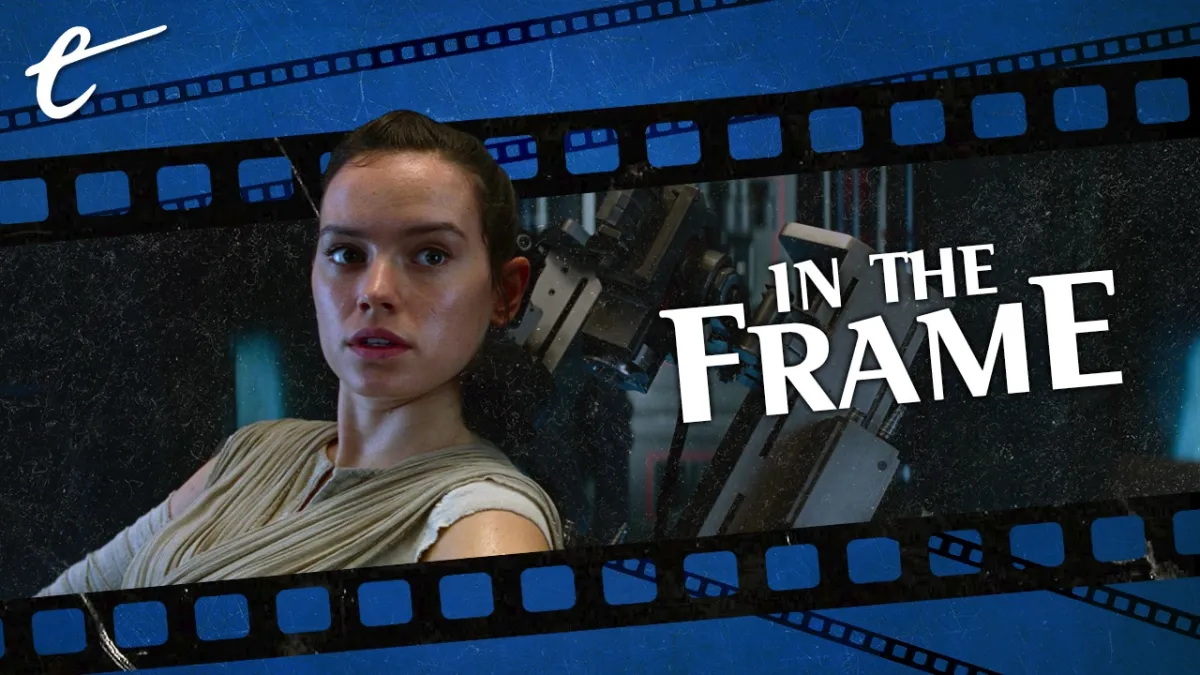Star Wars: The Force Awakens was released five years ago this month. The film has been debated and discussed, argued over, and analyzed in countless ways since its initial release. It seems likely these debates will continue into the future. However, one of the more interesting legacies of The Force Awakens remains one of the least discussed. With the release of The Force Awakens in December 2015, Disney effectively killed the adult-skewing Christmas blockbuster.
The adult-skewing Christmas blockbuster was a very strange and specific phenomenon that arose in the early 2010s. Much has been written about the death of the mid-budget adult movie and its relationship to the blockbuster arms race that arose at the turn of the millennium. As studios realized that bigger-budget movies could earn higher rewards at the box office, they began filling the summer season with more expensive films.
While the number of films released each year has almost consistently increased, the number of those films coming from major studios has steadily decreased. In 2002, Disney released 22 films; a decade later, it released only 13. In 2002, Sony released 31 films; by 2012, that number had dropped to 18. At the same time, the number of movies to have earned over $1 billion has steadily increased, with 44 of the 47 movies to cross that threshold released since 2000 (and many of the others crossed it in re-release).
Even producing fewer movies, the studios found themselves competing for space in the summer. Scheduling blockbusters often became a game of chicken, with major studios top trumping one another. For example, after the middling box office for Godzilla: King of the Monsters, Warner Bros. initially rescheduled Godzilla vs. Kong to November to move it out of the path of movies like Onward, A Quiet Place 2, and Mulan — of course, those movies would face their own release hurdles.

If even blockbusters had to get out of each other’s way, what hope was there for films that couldn’t compete on that level? For a brief moment at the start of the 2010s, the studios seemed to find an answer. Moderately budgeted adult-skewing films could potentially thrive in the Christmas release window, far away from the blockbuster drama of the summer. It seemed like there was space in the schedule for movies that didn’t need to perform like Marvel Studios films.
Of course, the major studios had tried to colonize the festive season at the turn of the millennium. Warner Bros. had enjoyed great success with the Lord of the Rings trilogy as Christmas releases; although only the last of the three crossed the billion-dollar mark, each was either the second-highest- or highest-grossing movie of its year. Attempts to reproduce that success with releases like The Chronicles of Narnia and The Hobbit met with only moderate success.
In the wake of The Lord of the Rings, there were winter blockbusters that performed well, but rarely on par with summer releases: The Chronicles of Narnia: The Lion, the Witch and the Wardrobe was the third-highest-grossing movie of 2005; Night at the Museum was the fifth-highest-grossing movie of 2006; I Am Legend was the seventh-highest-grossing movie of 2007. Other attempts to transplant blockbusters to winter resulted in box office disappointments like Tron: Legacy or Exodus: Gods and Kings.
As in so many other ways, Avatar was an exceptional case, storming to the title of highest-grossing film of all time with a Christmas release. However, Avatar was not an easily reproducible case for Hollywood, as demonstrated by the film industry’s brief (and ill-fated) flirtation with resurrecting 3D filmmaking in the early 2010s. After all, more than a decade after the release of Avatar, audiences are still waiting for the long-promised sequels.
![]()
If traditional blockbusters struggled in the Christmas release window, what thrived in that environment? Befitting the season, family-skewing films like the aforementioned Narnia and Night at the Museum films tended to do well enough in the season. Frozen is the best illustration of this, its reign stretching from November to December to become the highest-grossing film of 2013. It was also a prime release spot for comedies like Anchorman 2: The Legend Continues or Daddy’s Home.
However, the lack of dominating four-quadrant blockbusters coupled with the thriving market for child-friendly entertainment created a rare environment that could support an endangered species, if only as counterprogramming. At the dawn of the 2010s, the December release window became a safe space for the high-profile, well-produced, broadly appealing, adult-skewing feature. Indeed, the timing was perfect for these films as a launchpad into awards season.
David Fincher capitalized on this window twice, with two of his three highest-grossing movies to that point released in that space: The Curious Case of Benjamin Button in 2008 and The Girl with the Dragon Tattoo in 2011. While The Curious Case of Benjamin Button positioned itself in the spirit of the season as a timeless feel-good family-friendly film, The Girl with the Dragon Tattoo did the opposite. The movie’s breathtaking teaser trailer promised “the feel-bad movie of Christmas.”
While it was subsequently reported that the film made “a modest loss” for studio MGM, The Girl with the Dragon Tattoo took an impressive $232M haul for a $90M budgeted R-rated movie about misogyny and violence. The film’s box office performance signaled that such unlikely movies could find an audience at Christmas, making it within striking distance of profitability. Indeed, the films that followed would be even more successful.

In 2012, Django Unchained was an unlikely breakout hit at the Christmas box office, with the brutal slavery epic becoming Quentin Tarantino’s highest-grossing movie. In 2013, the graphic and cynical The Wolf of Wall Street became the highest-grossing movie of veteran film director Martin Scorsese’s career. While these movies didn’t top the year’s box office, they performed admirably and demonstrated that audiences would turn up for potentially alienating adult-skewing movies.
Then The Force Awakens arrived. Perhaps acknowledging that the summer was overcrowded, Disney decided to move away from the Star Wars franchise’s traditional May release date and scheduled the first of the sequel trilogy for December. It worked. The Force Awakens became not only the highest-grossing movie of 2015, but the highest-grossing movie of all time at the domestic box office. Unlike the freak success of Avatar in 2009, this formula could be easily replicated.
With its own December release the subsequent year, Rogue One went on to be the second-highest-grossing movie of 2016 at the domestic and global box office. The Last Jedi would make it a trend, with its December 2017 release becoming the highest-grossing movie of the year. The attempt to move Star Wars back to summer with Solo ended in tears for everybody involved. Christmas was now the home of Star Wars, reflected even in the release schedule of The Mandalorian.
The arrival of these box office behemoths sucked the oxygen out of the room. With The Force Awakens, Disney successfully colonized the holiday. Even the counterprogramming was aimed at a broader audience, with the slow-burn box office success of The Greatest Showman opposite The Last Jedi and the nightmarish flop of Cats opposite The Rise of Skywalker. These musicals built off the successes enjoyed by Les Misérables in December 2012 and Into the Woods in December 2014.

Although the current pandemic has obviously disrupted release schedules, it is clear that the conclusion of the Star Wars sequel trilogy will not see the major studios abandoning their winter foothold. Warner Bros. originally scheduled Dune to take the December 2020 slot that Disney vacated following The Rise of Skywalker. For its part, Disney moved Steven Spielberg’s remake of West Side Story into the “musical counterprogramming” slot opposite Denis Villeneuve’s seasonal space opera.
With the loss of the December window, moderately budgeted adult-skewing films had nowhere to go. 20th Century Fox would try to launch several such films in the years that followed: Bad Times at the El Royale in October 2018, Widows in November 2018, Ad Astra in September 2019. They all garnered strong reviews, but none of them found an audience. Fox would eventually succeed with Ford v. Ferrari in November 2019, but by then the company had already been bought by Disney.
In this context, the release of The Force Awakens in December 2015 feels like a watershed moment. Since the release of Inception in July 2010, the only wholly original live-action Hollywood movies to earn over $600M at the box office were Gravity released in October 2013 and Interstellar released in November 2014, both of which were late-in-the-year releases. It is interesting to look back on a time when movies like those, along with Django Unchained and The Wolf of Wall Street, could flourish.
There is a lot to talk about when it comes to the legacy of The Force Awakens in terms of the Star Wars canon. However, it’s also worth taking a step back and looking at its larger impact in shaping the modern blockbuster climate.





